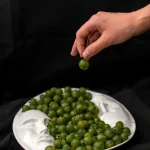Steak frites, a seemingly simple dish of perfectly seared steak served alongside crisp, golden fries, boasts a surprisingly rich and layered history. While pinpointing its exact origin is difficult, its popularity is undeniably linked to the evolution of French cuisine and its global dissemination. The dish’s core components – beef and potatoes – have been staples in European diets for centuries, but the combination itself likely emerged in the late 19th or early 20th century, coinciding with the rise of brasseries and bistros in France. These establishments, catering to a growing middle class, offered hearty, affordable meals, and steak frites quickly became a favorite, showcasing the nation’s culinary prowess in a straightforward, satisfying way.
The cultural significance of steak frites extends beyond its simple ingredients. In France, it’s more than just a meal; it’s a cultural touchstone, representing a classic French bistro experience. The quality of the beef and the meticulous preparation of the fries are crucial, reflecting a dedication to quality ingredients and skillful execution. This dedication is evident in the variations seen across different regions of France, with subtle differences in cut, seasoning, and even the type of potato used. Its popularity isn’t confined to France, however; steak frites has become a globally recognized dish, appearing on menus from upscale restaurants to casual diners worldwide. Its enduring appeal lies in its versatility and adaptability; the dish can be elevated with gourmet sauces or kept simple and classic, catering to diverse palates.
Interestingly, the popularity of steak frites is reflected in global food trends. While precise statistics on its consumption are hard to come by, its ubiquity on restaurant menus across continents speaks volumes. The dish’s enduring appeal is likely linked to its satisfying combination of protein and carbohydrates, offering a balanced and filling meal. Furthermore, the simplicity of the recipe allows for creativity and experimentation; chefs can explore different cuts of beef, seasonings, and fry preparations, constantly reinventing this culinary classic. The perfect steak frites represents a harmonious blend of simplicity and sophistication, a testament to the power of well-executed fundamentals in the culinary arts. This recipe will guide you through achieving that perfect balance, resulting in a dish that is both comforting and impressive.
Ingredients and Measurements
Creating the perfect Steak Frites hinges on using high-quality ingredients and precise measurements. Don’t skimp on the quality of your beef; it’s the star of the show! We’ll be focusing on a recipe for two servings, but this can easily be scaled up or down.
For the Steak (choose your preferred cut):
- Two (2) 8-ounce steaks, about 1-inch thick. Recommendations: Ribeye, New York Strip, or Filet Mignon for optimal tenderness and flavor. Ensure they are at room temperature for at least 30 minutes before cooking for even cooking.
For the Steak Seasoning:
- 2 teaspoons kosher salt. Kosher salt is preferred for its larger crystals, which allow for even distribution and prevent over-salting.
- 1 teaspoon freshly ground black pepper. Freshly ground black pepper offers a superior aroma and flavor compared to pre-ground.
- 1 teaspoon garlic powder (optional, but recommended for extra flavor).
- ½ teaspoon onion powder (optional, but adds depth of flavor).
For the Frites (French Fries):
- 2 large russet potatoes (about 1 pound total). Russet potatoes are ideal due to their high starch content, which results in fluffy interiors and crispy exteriors. Peel them if desired, though leaving the skins on adds nutrients and flavor.
- Vegetable oil, enough for deep frying (approximately 3 cups). Use a high-smoke-point oil like canola, peanut, or vegetable oil. Avoid olive oil, as it has a lower smoke point and will impart a bitter flavor at high temperatures.
- Kosher salt, to taste, for seasoning the fries after frying.
For the Aioli (optional, but highly recommended):
- ½ cup mayonnaise (high-quality mayonnaise is crucial for the best flavor and texture).
- 1 large garlic clove, minced.
- 1 tablespoon lemon juice.
- Salt and freshly ground black pepper to taste.
Important Note on Quantities: The quantities listed above are guidelines. Adjust the amount of salt and pepper to your personal preference. For the fries, the amount of potatoes can be adjusted based on your desired serving size. Remember to always use a thermometer to monitor the oil temperature during frying for optimal results. Using a meat thermometer to check the internal temperature of your steak is crucial for achieving your desired level of doneness.
Having all your ingredients measured and prepared beforehand will ensure a smooth and efficient cooking process, allowing you to focus on achieving perfectly cooked steak and crispy fries.
Preparation of Steak (Patting Dry, Seasoning)
Before you even think about searing your steak, proper preparation is key to achieving that perfect crust and juicy interior. This stage focuses on two crucial steps: patting the steak dry and generously seasoning it. Neglecting either will significantly impact the final result.
Patting the steak dry is arguably the most important step. Moisture is the enemy of a good sear. When a steak hits a hot pan, the water on its surface will steam instead of allowing the meat to brown properly. This leads to a grey, dull exterior rather than the beautiful, deeply caramelized crust you’re aiming for. To achieve optimal results, remove your steak from the refrigerator at least 30-60 minutes before cooking; this allows it to come to room temperature. Then, using paper towels, thoroughly pat the entire surface of the steak, including the edges, completely dry. Don’t just dab it; actively press the paper towels against the meat to absorb as much moisture as possible.
Now comes the seasoning. Don’t be shy with the salt! Many people underestimate the amount of salt needed to properly season a steak. The salt not only enhances the flavor but also helps to draw out moisture, which then evaporates, contributing to a better sear. For a 1-inch thick steak weighing approximately 8 ounces, I recommend using about 1 teaspoon of kosher salt. If you’re using fine sea salt, you’ll need considerably less, approximately ½ teaspoon. Evenly distribute the salt across the entire surface of the steak, ensuring that it’s fully coated. You can gently rub the salt into the meat to help it adhere better. For a more intense flavor, consider adding freshly cracked black pepper. About ¼ teaspoon per 8-ounce steak is a good starting point; adjust to your preference. Don’t be afraid to experiment with other spices, such as garlic powder, onion powder, or even a pinch of cayenne pepper for a little heat, but remember that less is often more, particularly when dealing with high-quality meat.
Allow the seasoned steak to rest at room temperature for at least 15-30 minutes after seasoning. This allows the salt to penetrate the meat, further enhancing both flavor and texture. This extra step is often overlooked, but it makes a noticeable difference in the final product. The longer rest period allows for more even cooking and a more tender, flavorful result. During this rest period, you can prepare your other ingredients for the steak frites, such as the potatoes and sauce, making the entire cooking process more efficient.
Professional Tip: Consider using a blend of coarse and fine sea salt for optimal seasoning. The coarse salt adds a nice textural element, while the fine salt ensures even seasoning and better penetration. Experiment to find your perfect balance. Remember, patience and preparation are key to achieving a perfect steak frites.
Preparation of Fries (Cutting, Soaking)
The key to perfect steak frites lies not just in the steak, but also in the flawlessly crisp and fluffy fries. Proper preparation is paramount, starting with the right potatoes and meticulous cutting and soaking techniques.
Choosing the right potatoes is crucial. Russet potatoes, also known as Idaho potatoes, are ideal due to their high starch content. This starch contributes to the fluffy interior and crisp exterior we crave. Avoid waxy potatoes like red potatoes, which tend to become gummy when fried.
Begin by peeling 2 pounds of russet potatoes. You can use a vegetable peeler or a potato peeler for efficiency. Thoroughly wash the peeled potatoes under cold running water to remove any excess starch. This step helps prevent sticking and ensures even cooking.
Now comes the crucial cutting stage. Consistency in fry size is key for even cooking. Aim for uniform sticks, approximately ½ inch by ½ inch by 3-4 inches long. A mandoline slicer is highly recommended for achieving this precision, but a sharp knife will suffice with practice. If using a knife, work methodically, ensuring each fry is as close to the same size as possible. Variations in size will lead to some fries being overcooked while others are undercooked.
Once cut, immediately place the fries in a large bowl filled with cold water. Soaking the fries in cold water for at least 30 minutes, and preferably up to 2 hours, is essential. This step leaches out excess starch. The starch is what can make your fries gummy and less crispy. Change the water at least once during the soaking period to ensure maximum starch removal. You’ll notice the water becoming cloudy as the starch is released.
Why is soaking so important? The process removes excess starch, resulting in fries that are crispier on the outside and fluffier on the inside. Soaking also helps to prevent the fries from browning too quickly during frying, allowing for a more even cook. Neglecting this step can lead to disappointing, soggy fries.
After soaking, thoroughly drain the fries. Pat them completely dry with clean kitchen towels or paper towels. Removing excess moisture is critical for achieving that perfect golden-brown, crispy exterior. Any remaining water will cause the fries to steam rather than crisp during frying. This is the final step before the frying process begins, ensuring your fries are ready to achieve their full potential.
With properly prepared fries, you’re well on your way to creating a truly memorable steak frites experience. Remember, attention to detail in this stage translates directly to the quality of your final dish.
Cooking the Fries (Frying Technique, Achieving Crispness)
Achieving perfectly crisp steak frites requires a two-stage frying process, often referred to as double-frying. This method ensures a fluffy interior and an incredibly crunchy exterior. It’s crucial for maximizing the flavor and texture of your fries.
First Fry (Blanching): Begin by cutting your potatoes into even-sized batons, ideally around ½ inch thick and 3-4 inches long. Consistency in size is key; this ensures even cooking. After cutting, rinse the potatoes thoroughly under cold running water to remove excess starch. This step helps prevent sticking and promotes a crispier fry. Soak the potatoes in cold water for at least 30 minutes, or even up to an hour. This further removes starch and contributes to a lighter, crispier result.
Next, heat a large pot or deep fryer filled with approximately 3 cups of vegetable oil to 325°F (163°C). Use a thermometer to monitor the temperature precisely. Avoid overcrowding the pot; work in batches to maintain a consistent oil temperature. Carefully add the potatoes to the hot oil, ensuring they are fully submerged. Fry for approximately 5-7 minutes, or until they are slightly softened but not browned. They should be cooked through but still pale in color. Remove the fries with a slotted spoon and place them on a wire rack to drain excess oil. This initial fry is crucial for cooking the interior of the potato.
Second Fry (Crisping): Once the fries have cooled slightly (about 30 minutes), increase the oil temperature to 375°F (190°C). This higher temperature is essential for achieving maximum crispness. Again, work in batches to avoid lowering the oil temperature. Carefully add the fries to the hot oil and fry for 2-4 minutes, or until they are golden brown and intensely crispy. Do not overcrowd the fryer during this stage either. Overcrowding will lower the oil temperature and result in soggy fries.
Seasoning and Serving: Immediately remove the fries from the oil and transfer them to a wire rack set over a baking sheet lined with paper towels to drain excess oil. Season generously with salt while they are still hot. Kosher salt is recommended for its larger crystals, which adhere better to the fries and provide a more intense flavor. You can also add other seasonings like black pepper, paprika, or garlic powder at this stage.
Professional Recommendations: Using a good quality, high-smoke-point oil like vegetable, canola, or peanut oil is crucial. These oils can withstand higher temperatures without breaking down and imparting unwanted flavors. Always monitor the oil temperature closely throughout the frying process. A sudden drop in temperature will result in greasy, soggy fries. Finally, don’t be afraid to experiment with different potato varieties; some hold their shape and crispiness better than others.
By following these steps carefully, you will achieve perfectly crisp and delicious steak frites that will complement your steak beautifully.
Cooking the Steak (Searing, Achieving Desired Doneness)
Now that your steak is seasoned and ready, it’s time to achieve that perfect sear and cook it to your desired doneness. For this recipe, we’ll be using a combination of high-heat searing and finishing in a hot oven, ensuring even cooking throughout. This method works best for steaks at least 1 inch thick.
Searing the Steak: Begin by patting your steak completely dry with paper towels. This is crucial for a good sear; moisture prevents the Maillard reaction, which is responsible for that delicious browned crust. Heat a heavy-bottomed skillet (cast iron is ideal) over high heat for at least 5 minutes. You should see a shimmering haze above the pan when it’s ready. Add 1 to 2 tablespoons of high-smoke-point oil, such as canola or grapeseed oil, to the hot pan.
Once the oil is shimmering, carefully place the steak in the hot pan. Do not overcrowd the pan; if necessary, sear in batches. Sear for 2-3 minutes per side, undisturbed, until a deep brown crust has formed. Resist the urge to move the steak around during this crucial searing stage. Use tongs to gently nudge it if it’s sticking fiercely, but generally, let it develop its crust undisturbed.
Achieving Desired Doneness: After searing, you’ll transfer the steak to a preheated oven to ensure even cooking throughout. Pre-heat your oven to 400°F (200°C). Place the seared steak on a wire rack set inside a baking sheet to allow for even heat circulation. This prevents steaming and ensures a nice crust.
The cooking time in the oven will depend on the thickness of your steak and your desired doneness. Use a meat thermometer for the most accurate results. Here’s a general guideline:
- Rare: 125-130°F (52-54°C) – Approximately 8-10 minutes in the oven after searing.
- Medium-Rare: 130-140°F (54-60°C) – Approximately 10-12 minutes in the oven after searing.
- Medium: 140-150°F (60-66°C) – Approximately 12-15 minutes in the oven after searing.
- Medium-Well: 150-160°F (66-71°C) – Approximately 15-18 minutes in the oven after searing.
- Well-Done: 160°F (71°C) and above – Approximately 18-20 minutes in the oven after searing. We strongly advise against well-done steak as it often results in a dry and tough texture.
Important Note: Resting the steak is crucial. Once the steak reaches your desired internal temperature, remove it from the oven and let it rest on a cutting board, loosely tented with foil, for at least 10-15 minutes. This allows the juices to redistribute, resulting in a more tender and flavorful steak. During this rest period, you can prepare your frites and sauce.
After resting, slice the steak against the grain and serve immediately with your perfectly cooked steak frites.
Sauce Preparation (Optional, e.g., Bearnaise, Red Wine Reduction)
While perfectly cooked steak frites is delicious on its own, a flavorful sauce elevates the dish to a truly memorable experience. Here are two classic options: Bearnaise and Red Wine Reduction. Choose your favorite, or try both!
Bearnaise Sauce
Bearnaise, a rich and emulsified butter sauce, is a classic accompaniment to steak. Its tangy, slightly herbal flavor cuts through the richness of the meat beautifully. This sauce requires careful attention to temperature and emulsification.
Ingredients:
- 4 large egg yolks
- 1 tablespoon white wine vinegar
- 1 tablespoon water
- 1 teaspoon shallots, finely minced
- 1/2 teaspoon tarragon, finely chopped (fresh is best)
- 1 cup (2 sticks) unsalted butter, clarified and melted
- Salt and freshly ground white pepper to taste
Instructions:
- Combine egg yolks, vinegar, water, shallots, and tarragon in a heatproof bowl set over a pan of simmering water (double boiler). Ensure the water doesn’t touch the bottom of the bowl.
- Whisk constantly until the mixture thickens and is pale yellow, about 5-7 minutes. This is crucial for emulsification.
- Slowly drizzle in the melted, clarified butter, whisking continuously. Work slowly to prevent the sauce from breaking.
- Season with salt and white pepper to taste. If the sauce is too thick, add a teaspoon of warm water at a time until you reach the desired consistency.
- Remove from heat and keep warm until ready to serve. Do not let it sit for too long, as it may separate.
Red Wine Reduction
A red wine reduction offers a deep, savory counterpoint to the steak. The key to a successful reduction is low and slow cooking to allow the alcohol to evaporate and the sauce to thicken.
Ingredients:
- 1 cup dry red wine (e.g., Cabernet Sauvignon or Merlot)
- 1/2 cup beef broth
- 2 tablespoons unsalted butter
- 1 tablespoon shallots, finely minced
- 1 teaspoon fresh thyme leaves
- Salt and freshly ground black pepper to taste
Instructions:
- In a saucepan over medium heat, combine the red wine, beef broth, shallots, and thyme. Bring to a simmer.
- Reduce the heat to low and let the mixture simmer uncovered, stirring occasionally, until it has reduced to about 1/4 cup, approximately 20-30 minutes. The longer it simmers, the richer the flavor will be.
- Stir in the butter until melted and incorporated.
- Season with salt and pepper to taste.
- Keep warm until ready to serve.
Professional Tip: For both sauces, using high-quality ingredients will significantly impact the final flavor. Fresh herbs and good quality butter are essential.
Recommendations for Perfect Steak Frites
To achieve truly perfect steak frites, attention to detail is key throughout the entire process, from selecting the right cut of meat to the final plating. Choosing a high-quality cut of beef, such as ribeye, New York strip, or sirloin, is paramount. Ensure the steak is at room temperature before cooking to promote even cooking. Properly seasoning the steak generously with salt and freshly cracked black pepper is also crucial; don’t be shy with the seasoning! For the frites, using starchy potatoes like russets or Idaho potatoes will yield the best results. Double-frying the frites ensures a perfectly crisp exterior and a fluffy interior.
Regarding cooking methods, consider your personal preference and equipment. Pan-searing offers excellent browning and a flavorful crust, while grilling lends a smoky char. Regardless of your chosen method, pay close attention to the internal temperature of the steak using a meat thermometer to achieve your desired doneness. For medium-rare, aim for 130-135°F (54-57°C); medium, 140-145°F (60-63°C); and well-done, 160°F (71°C) or above. Remember to let the steak rest for at least 5-10 minutes after cooking to allow the juices to redistribute, resulting in a more tender and flavorful steak.
Serving suggestions are plentiful! A classic presentation involves placing the perfectly seared steak alongside a generous portion of golden-brown frites. Consider adding a simple yet elegant garnish, such as fresh parsley or chives. Aioli, béarnaise sauce, or a classic red wine reduction are all excellent accompaniments to elevate the dish. For a more complete meal, a side salad with a light vinaigrette adds freshness and balances the richness of the steak and frites.
Storage: Leftover steak and frites should be stored separately. The steak should be wrapped tightly in plastic wrap or placed in an airtight container and refrigerated for up to 3 days. Frites are best enjoyed fresh, but if storing leftovers, allow them to cool completely before storing in an airtight container in the refrigerator for up to 2 days. Reheat gently in the oven or air fryer to restore some crispness. Do not refry.
Complementary dishes to consider include a simple green salad with a light vinaigrette, roasted asparagus, or sauteed mushrooms. A robust red wine, such as a Cabernet Sauvignon or Merlot, pairs exceptionally well with the steak. For a lighter option, a crisp Sauvignon Blanc or Pinot Grigio would also complement the meal.
Nutritional information (per serving, approximate and varies based on ingredients and portion size): Calories: 800-1200; Protein: 40-60g; Fat: 60-90g; Carbohydrates: 50-80g; Fiber: 5-10g. Note: These values are estimates and can vary significantly depending on the size of the steak, type of potatoes used, and the amount of added fats and sauces.
Enjoy your perfectly crafted Steak Frites! Remember to adjust seasonings and cooking times to your personal preference. Experiment with different sauces and sides to create your own signature dish.





